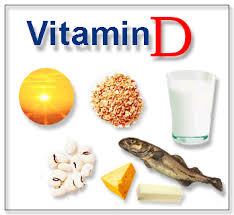
“If not managed on priority, a large population of Indians, including infants, suffering from vitamin D deficiency, run a huge risk of suffering from rickets, osteoporosis, cardiovascular diseases, diabetes, cancer and infections such as tuberculosis.” This is what Dr. Bruce Hollis, an eminent American Endocrinologist and global authority on vitamin D therapy, said at an international seminar on ‘Recent Advancements in Vitamin D Therapy Management’ held at Mumbai.
Referring to the widespread vitamin D deficiency among Indians as a lifestyle issue, Dr. Hollis quoted various studies to reinforce the severity of the situation which is threatening to reach alarming levels. He further supported the claim with research findings that confirm that 93% of patients experiencing musculoskeletal pain are vitamin D deficient, as are over 80% of the pregnant women in India, which can lead to pregnancy and birth related complications. Dr. Hollis recommended that an ideal dose of Vitamin D supplements goes a long way in reducing pregnancy and birth related complications and is also helpful in osteoporosis and improving bone health.
He further stressed that getting enough vitamin D during pregnancy would help in several key areas, including, preventing gestational diabetes, lowering the risk of preeclampsia, reducing the risk of asthma.
Dr. Hollis has been researching vitamin D for over 35 years and has published well over 200 peer reviewed articles on a wide range of health outcomes. The National Institute of Health provided Dr. Hollis with grants which enabled his team to determine the ideal vitamin D dosage for pregnant and breastfeeding mothers. Their team discovered that daily supplementation with 4,000 IU during pregnancy was required to reduce pregnancy and birth complications. Furthermore, they found that 6,400 IU taken on a daily basis while breastfeeding provided the infants with sufficient vitamin D status.
Highlighting the significance of the subject, Prof Dr John Ebnezar, a Padma Shri Awardee and Dr B C Roy National Award winner, who is also an internationally renowned orthopaedician, spine and geriatric Surgeon from Bengaluru said, “Vitamin D deficiency is quite common in my practice and levels of vitamin D are very low in Indian population. It is imperative that people get adequate awareness.”
Echoing the views Dr. Pramod Jog, Immediate Past President of Indian Academy of Paediatrics and Professor of Pediatrics at DY Patil Medical College, Pune reiterated, “Vitamin D deficiency is very common in infants across the world, including India. The Indian Academy of Pediatrics has recently published guidelines to address this growing issue and create awareness among pediatricians in India.”
Vitamin D deficiency is defined as 25(OH)D < 20 ng/mL, insufficiency as 20–29 ng/mL and sufficiency as =30 ng/mL. Various studies of vitamin D deficiency reveals that about 65-70% of Indians are deficient in vitamin D and another 15% are insufficient and also warn that if it is not managed properly, there are high chances that it can lead to rickets, osteoporosis, cardiovascular diseases, diabetes, cancer and infections such as tuberculosis.
Vitamin D deficiency is highly prevalent in both urban and rural settings, and across all socio-economic and geographic strata. It is also observed that children, pregnant women and elderly people are likely to get most affected because of vitamin D deficiency.
The International Speaker Programme was organised by Cadila Pharmaceuticals in Bengaluru on 4th August, Mumbai on 5th August and New Delhi on 6th August. Over 1,000 physicians, gynaecologists, paediatricians, orthopaedics, cardiologists and endocrinologists across 20 major cities including Ahmedabad, Mumbai, Pune, Kolkata, Chennai, Hyderabad, Chandigarh, Lucknow, Patna, Jaipur, Indore among others joined over LIVE web streaming in their respective cities.
Vitamin d, deficiency, alarming proportions